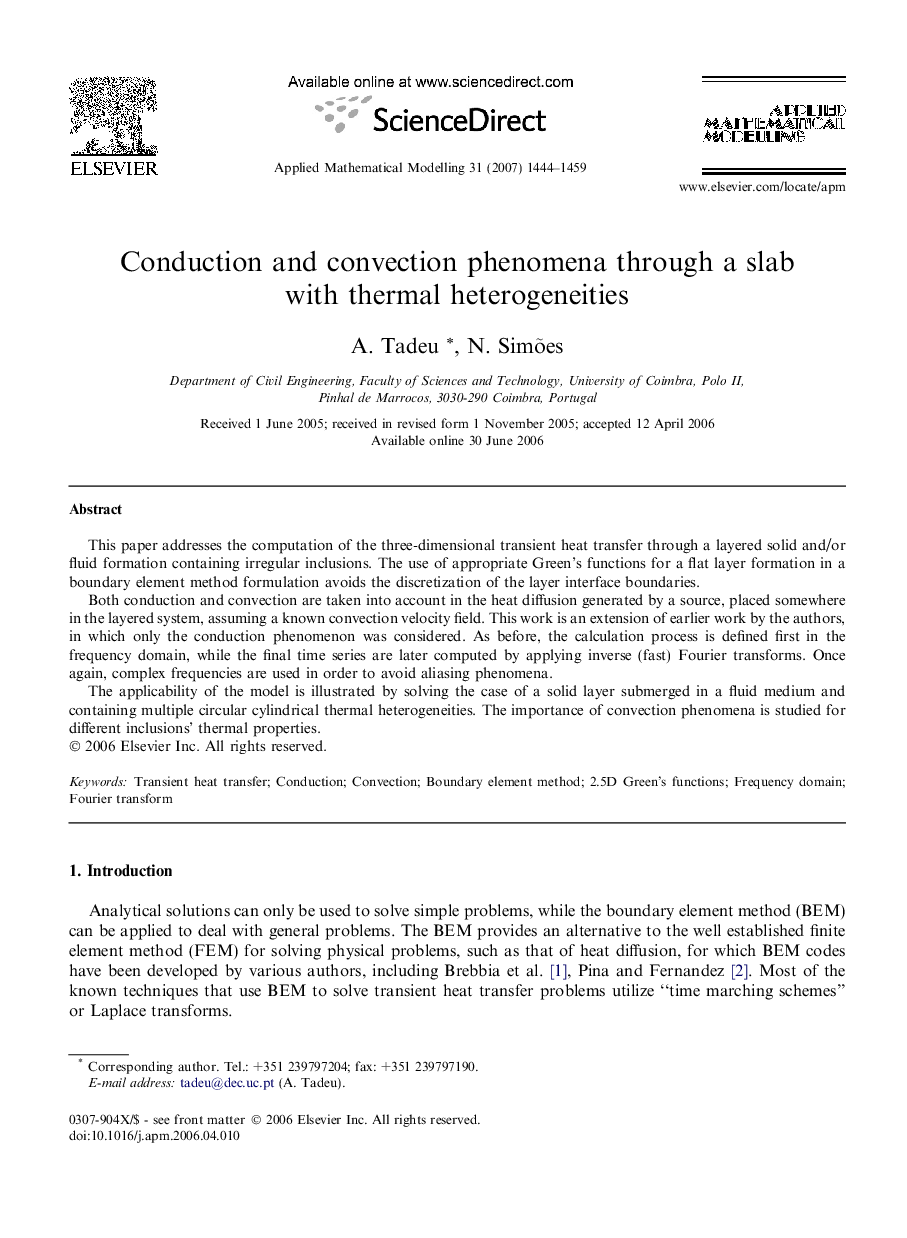| Article ID | Journal | Published Year | Pages | File Type |
|---|---|---|---|---|
| 1706734 | Applied Mathematical Modelling | 2007 | 16 Pages |
This paper addresses the computation of the three-dimensional transient heat transfer through a layered solid and/or fluid formation containing irregular inclusions. The use of appropriate Green’s functions for a flat layer formation in a boundary element method formulation avoids the discretization of the layer interface boundaries.Both conduction and convection are taken into account in the heat diffusion generated by a source, placed somewhere in the layered system, assuming a known convection velocity field. This work is an extension of earlier work by the authors, in which only the conduction phenomenon was considered. As before, the calculation process is defined first in the frequency domain, while the final time series are later computed by applying inverse (fast) Fourier transforms. Once again, complex frequencies are used in order to avoid aliasing phenomena.The applicability of the model is illustrated by solving the case of a solid layer submerged in a fluid medium and containing multiple circular cylindrical thermal heterogeneities. The importance of convection phenomena is studied for different inclusions’ thermal properties.
